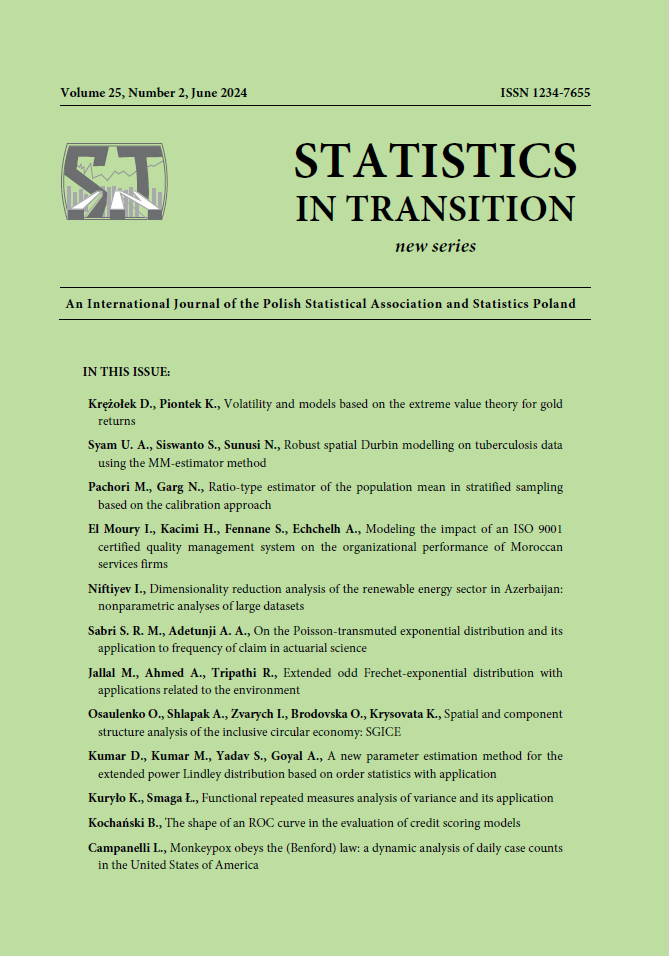Monkeypox obeys the (Benford) law: a dynamic analysis of daily case counts in the United States of America
Monkeypox obeys the (Benford) law: a dynamic analysis of daily case counts in the United States of America
Author(s): Leonardo CampanelliSubject(s): Economy
Published by: Główny Urząd Statystyczny
Keywords: Benford’s law; monkeypox; Euclidean distance statistic; dynamic analysis;
Summary/Abstract: We analyze, for the first time, the first-digit distribution of the monkeypox daily cases in the United States of America, from May 17 to September 21, 2022. The overall data follow Benford’s law, a conclusion substantiated by eight different statistical tests, including the “Euclidean distance test”, which has been designed to specifically check Benford’s distribution in data. This result aligns with those of other infectious diseases, such as COVID 19, whose Benfordness has already been confirmed in the literature. Daily counts of monkeypox cases, like any other disease evolve in time. For this reason, we analyzed the temporal deviation of monkeypox counts from Benford’s law to check for possible anomalies in the temporal series of cases. The dynamic analysis was performed by means of the Euclidean distance test. This is because, to our best knowledge, that is the only statistically valid, Benford-specific test whose underlying estimator has a cumulative distribution function with known analytical properties, and is applicable to small and large samples. This is the case in dynamic analyses, where the number of data points usually starts from small values and then increases in time. No anomalies were detected, which indicates that no (fraudulent) alterations or errors in data gathering took place.
Journal: Statistics in Transition. New Series
- Issue Year: 25/2024
- Issue No: 2
- Page Range: 219-227
- Page Count: 8
- Language: English

